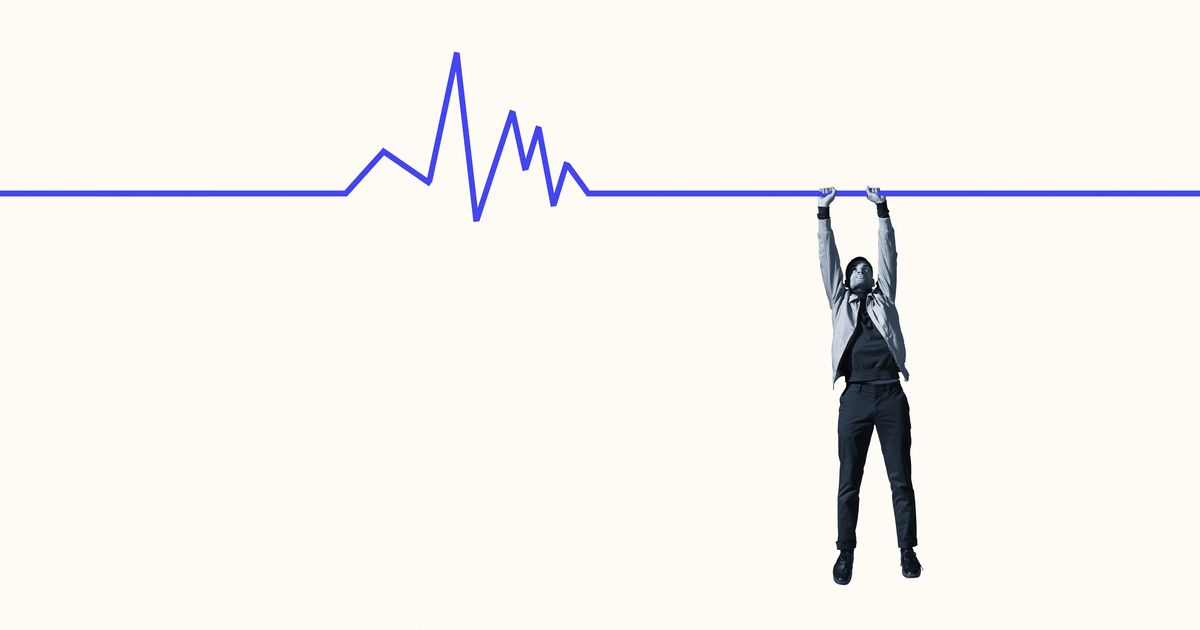
In the wake of President Joe Biden‘s inauguration, some on social media expressed profound relief. Others wondered how long it might take to recover from the fear and exhaustion of the past four years.
For those on the left and right who welcomed Biden’s election, the inaugural transition seemed like the moment to finally leave behind the psychological toll of the deception, bullying, and deadly incompetence that characterized the Trump administration. (Trump supporters were on a different path, moving from hopeful to distraught.) If that sense of liberation seemed short-lived, however, there’s a reason: Multiple, life-threatening crises still dominate everyday life.
Vaccines aren’t reaching people fast enough, which means the pandemic will likely persist into the summer. Millions of people slipped into poverty in the last year, forcing families to go hungry and become homeless. At least a third of voters still falsely believe that Biden wasn’t legitimately elected. Right-wing militia and white supremacist movements are dedicated to rejecting America’s multiracial democracy. Racial inequality remains a defining feature of American life for Black, brown, and indigenous people, even if the Biden administration has begun acting on its promises to create systemic equity. Meanwhile, researchers again confirmed that earth’s ice sheets are melting at an alarming pace.
Roxane Cohen Silver, a professor of psychological science, medicine, and public health at the University of California, Irvine, believes that people’s well-being today must be seen in the context of what transpired in the past year, regardless of whether they feel more hopeful with a new administration.
“I definitely see the year 2020 as a time of cascading traumas that were almost too much to bear,” Silver said.
“We do not know how bad things will get, nor when recovery can truly begin.”
She co-authored a paper last fall in Nature Human Behaviour that described the unprecedented nature of a pandemic, recession, social unrest, and weather-related disasters happening simultaneously. All of those crises are still playing out.
“These traumas are chronic events with an ambiguous endpoint,” Silver and her co-authors wrote. “We do not know how bad things will get, nor when recovery can truly begin.”
While there’s limited research on the psychological effect of overlapping crises, Silver said that the research on the traumas she outlined in her paper suggest that many people have difficulty coping with any one of those events on their own. When combined with other traumatic experiences, it can compound stress and anxiety.
Silver has spent 40 years studying responses to trauma. Her work has looked at numerous events, including how Chileans handled experiencing an earthquake followed by a tsunami and how people responded to the 2013 Boston Marathon bombing. She has also studied tragedies like the loss of an infant or spouse.
She’s learned there’s “enormous variability” in how people respond to the same event. Personal and social factors can make an important difference in those responses. People with pre-existing mental health conditions, a history of adversity, and fewer economic resources may be more vulnerable to poorer emotional and psychological outcomes in the wake of cascading traumas. People are also at greater risk when they’re disproportionately affected by trauma. Think, for example, of how the pandemic has torn through Black, Latino, and indigenous communities, leading to far greater infections and deaths than in white communities.
In general, media exposure to collective traumas that includes distressing imagery may contribute to worse mental health symptoms over time as well.
Of course, people have also demonstrated remarkable resilience to the cascading traumas, and some have done so specifically because of what they learned from past experience with tragedy. But Silver and her co-authors’ preliminary research on the pandemic suggests people will have stronger emotional responses to new traumas, rather than acclimating and “numbing themselves” to the “unending cascade of traumas.”
In other words, if the relief of a new administration felt abbreviated or suddenly dwarfed by the threat of climate change and white nationalism, that makes sense.
“I think that negative and positive emotions will wax and wane for many people, and they should not feel like they are ‘going crazy’ just because their emotions fluctuate from day to day — and even hour to hour,” Silver said in an email following our interview. “What is most important is that a person finds that they can function reasonably well for most of their days.”
She and her co-authors called for measures like increased mental health support and virtual programs to reduce loneliness. They advocated for increased resources for communities of color. Research suggests that strong social networks and emotional support, both at the community and individual levels, can mitigate the negative effects of trauma.
Silver said science has no answers about how long it will take for people to recover from cascading traumas, or what that might look like, particularly if those traumas are still unfolding. She urges people to give themselves permission to take as much time as they need to cope with a traumatic experience.
“My message has always been there’s no one way to respond to this series of events,” she said. “There’s no right way — there’s just different ways.”
If you want to talk to someone or are experiencing suicidal thoughts, Crisis Text Line provides free, confidential support 24/7. Text CRISIS to 741741 to be connected to a crisis counselor. Contact the NAMI HelpLine at 1-800-950-NAMI, Monday through Friday from 10:00 a.m. – 6:00 p.m. ET, or email info@nami.org. Here is a list of international resources.
